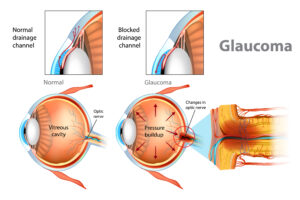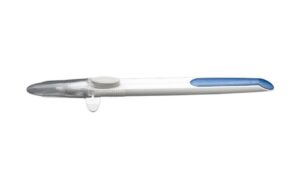Have you or someone you love recently received a glaucoma diagnosis? Although it may seem scary, you’re not alone.
Glaucoma is one of the leading causes of blindness in adults who are 60 and over. Glaucoma is often called the “Silent Thief of Sight.”
The eye condition can cause permanent damage to your vision. There are usually no discernible symptoms in its early stages.
But if you schedule regular eye exams, receiving an early diagnosis of glaucoma becomes much easier. Diagnosing glaucoma in its early stages makes it more likely to treat it before it can steal your vision.
Although there is no cure for glaucoma and the damage it causes is irreversible, you can manage the eye condition. It’s usually managed with a combination of medication, therapies, and surgical procedures.
In the early stages, you may only need medication to keep it under control. You may also be able to use Durysta, a revolutionary glaucoma treatment that can replace traditional glaucoma medication.
But what makes Durysta such a revolutionary way of treating glaucoma? Keep reading to learn more about how glaucoma medication works, how Durysta is different, and why it’s often an excellent way of treating open-angle glaucoma.
What is Open-Angle Glaucoma?

Glaucoma is the name given to a group of eye conditions that cause damage to the optic nerve. The optic nerve connects your eye to the brain.
If the optic nerve suffers any damage, your brain cannot get all the information you need about what you see. There are many different forms of glaucoma.
Almost all forms of glaucoma occur because of a buildup of intraocular pressure (IOP). This pressure builds when the aqueous becomes blocked off. The aqueous is the fluid that fills your eye.
If it becomes blocked off, it can no longer flow freely in and out of the eye as it should. Having higher than normal intraocular pressure puts unnecessary strain on the optic nerve and eventually damages it.
The main channel that fluid flows through is called the primary angle. The primary angle works like a valley between the iris and cornea.
In a rare form of glaucoma, the iris can bulge out, cutting off the angle quickly and causing a sudden pressure buildup. This is called angle-closure glaucoma.
Angle-closure glaucoma is considered a medical emergency as the pressure must be relieved immediately to prevent extensive damage to the optic nerve.
But the most common form of glaucoma is open-angle glaucoma. In open-angle glaucoma, pressure builds very slowly over a long time.
The primary angle remains open, but the other drainage channels in the eye, the trabecular meshwork, get backed up and blocked. The good news is that open-angle glaucoma is highly manageable when diagnosed and detected during its early stages, as damage to the optic nerve happens slowly.
Traditional Glaucoma Medication

Traditional glaucoma medication is usually in the form of eye drops. These eye drops help control intraocular pressure.
Glaucoma patients that need to take these eye drops must take them daily for them to remain effective. There are no medications or surgeries that can reverse the damage done to the optic nerve.
If there is vision loss due to glaucoma, you cannot regain it. Vision loss from glaucoma is irreversible and permanent.
However, you can slow down the rate of damage by using daily eye drops and other forms of treatment. Many glaucoma patients find the daily routine of remembering to use their eye drops cumbersome.
As a result, they may not always take their eye drops, and their intraocular pressure may not stay under control or maintained as it’s supposed to. For patients struggling with daily eye drop use, this is where something like Durysta comes in.
What is Durysta?

Durysta is the first ever FDA-approved sustained-release implant. It’s a tiny implant that contains bimatoprost.
Bimatoprost is a medication that helps control intraocular pressure. Durysta is implanted in the eye, and over time, it delivers glaucoma medication that controls your intraocular pressure the way traditional eye drops would. But unlike daily eye drops, you don’t have to do anything to keep it working as it works automatically.
How Does Durysta Work?
During a simple in-office procedure, the Durysta implant is easily placed inside the eye. Your eye doctor can implant it right at the office; no surgery is required.
The implant itself is made of a substance called bimatoprost. When implanted in the eye, the implant begins to dissolve.
As it dissolves, it releases bimatoprost into the eye. The bimatoprost targets the trabecular meshwork. Targeting the trabecular meshwork allows fluid to flow better through it.
As fluid flows better, this lowers intraocular pressure and puts less strain on the optic nerve. After 4-5 months, the Durysta implant dissolves entirely, so you don’t have to worry about getting it removed.
Why Durysta May Be Right For You

Durysta is excellent for patients with mild to moderate open-angle glaucoma. It can also be suitable for patients who haven’t yet developed glaucoma but have elevated intraocular pressure.
In many cases, Durysta can completely replace the need for traditional glaucoma medication, so you won’t have to remember to take eye drops.
Currently, the FDA has only approved Durysta for one use per eye. That means you cannot get Durysta implanted in the same eye again after the implant dissolves.
However, the FDA is looking into approval for multiple uses, so you may be able to have Durysta implanted in the same eye at some point.
If you’re tired of using eye drops to keep your glaucoma under control, Durysta can give you a much-needed break while lowering your intraocular pressure. Find out if Durysta is suitable for you by making an appointment with Loden Vision Centers in Nashville, TN.
Isn’t it time to stop letting eye drops dictate your every move if you have glaucoma?


